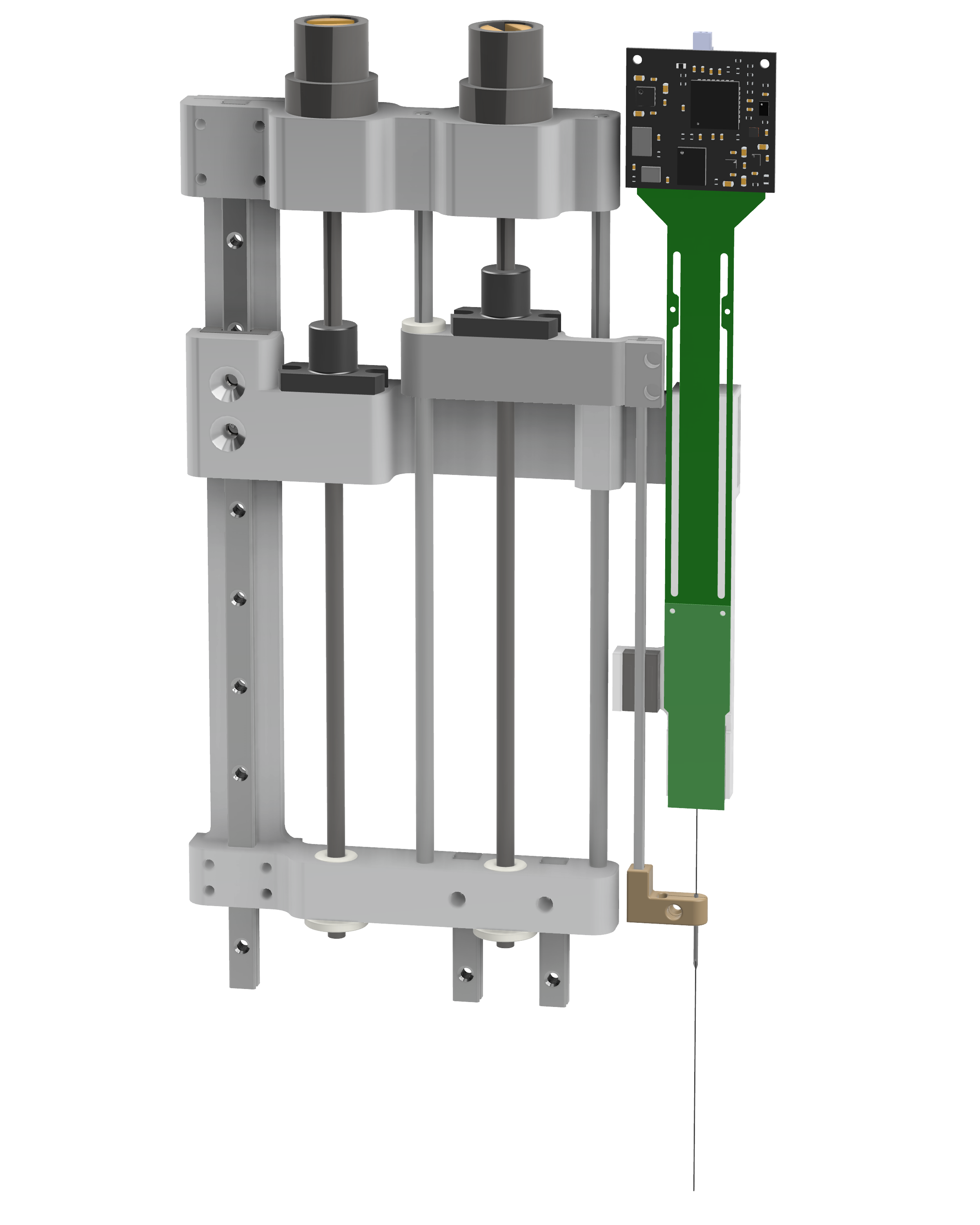Next-generation neurotech
New solutions for precise electrophysiology across multiple brain regions
The next generation of insights in neuroscience will be driven by forward-thinking investments in in neurotechnology.
One example of such a technology is the recently-developed NHP Neuropixels probe. This new recording technology fundamentally changes the landscape of electrophysiological recordings in large brains, whether in the hospital operating rooms or neuroscience laboratories.
A major barrier to the widespread adoption of these technologies, however, is the lack of off-the-shelf solutions for precise, accurate, and user-friendly methods of adopting these technologies. To address this, I’ve been working with a team of collaborators to develop an all-new Neuropixels Rail Drive System (NRDS).

The NRDS facilitates straight-forward and remarkably precise recording from superficial and deep brain regions, such as the hippocampus. Below, in an example of an neurophysiology experiment I’ve conducted, you can see the planned trajectory of the Neuropixels probe into the hippocampus, as well as a cross-section of the brain atlas at this site (left and middle, respectively). The cross-section shows the planned recording site, spanning three cell-body layers of the hippocampus: CA3, dentate gyrus, and CA1. In the actual recordings (right), we can see electrophysiological activity from 372 neural clusters during this experiment, with concentrations of neurons corresponding to each of the spanned cell body layers. The size of each dot is proportional to the firing rate of that cluster.

The next-generation of breakthroughs in neuroscience will surely require deeper understanding of how populations of neurons interact in real-time, across brain regions. Reliable systems for inserting multiple Neuropixels probes across many brain regions may be crucial to facilitating these kinds of experiments. In the images below, for example, you can see fluctuations in neural activity from four probes recording simultaneously acruss multiple brain regions. In these images, you can see the activity fluctuations of over 1100 neural clusters that were simultaneously recorded.

Contact
The designs for the NRDS will be released to the public in a forth-coming preprint. For more info about the NRDS, the possibility of using it in your lab, please feel free to contact me via email.